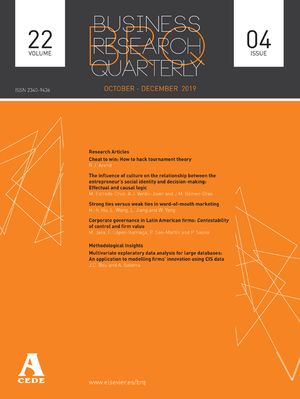Muchos mercados dirigidos por órdenes permiten a sus participantes introducir órdenes límite en las que no se revela el tamaño completo de la orden. En este artículo, se describe la utilización de este tipo de órdenes en el mercado español de acciones. Se muestra que una de cada cinco transacciones realizadas en el mercado español implica la detección de volumen oculto. La contribución del volumen oculto al proceso de negociación es más importante entre las acciones menos líquidas, y durante períodos de elevado riesgo de exposición de las órdenes limite. Además, se muestra que los usuarios de este tipo de órdenes se comportan como cazadores de tendencias y siguen un comportamiento imitador. Finalmente, se obtiene evidencia de una escasa capacidad predictiva de la detección neta de volumen oculto sobre los rendimientos de las acciones.
Many order-driven stock exchanges allow market participants to enter limit orders without fully revealing their size. In this paper, we describe the usage of these socalled hidden limit orders or iceberg orders at the Spanish Stock Exchange (SSE). We show that one out of five trades in the SSE involves hidden volume. Hidden volume is more important among the least liquid stocks. It emerges in periods of extremely high liquidity, as measured by the displayed book depth, and when impatient traders submit large-sized orders. Furthermore, we show that hidden limit order traders are momentum traders and show herding behavior. Finally, we find evidence of a weak statistically significant short-term predictability of net (buyer minus seller initiated) hidden limit orders trading over stock returns.
Queremos agradecer los comentarios y sugerencias recibidas por Mikel Tapia y Daniel G. Weaver, así como los realizados por los participantes en los siguientes seminarios y foros: ECARES (Université Libre de Bruxelles, Bélgica), XII Foro de Finanzas (Barcelona, España), MICFINMA Conference en Tilburg (Holanda) y VII Congreso Hispano-italiano en Matemática Financiera y Actuarial (Cuenca, España). Roberto Pascual agradece la financiación recibida por la Beca Fulbright y por el Ministerio de Educación, Cultura y Deportes de España. Asimismo, queremos agradecer a la Sociedad de Bolsas su disponibilidad a la hora de facilitarnos los datos necesarios para llevar a cabo el estudio. La ayuda financiera para el desarrollo de este proyecto fue obtenida del Instituto Valenciano de Investigaciones Económicas (IVIE), de los fondos FEDER y de los proyectos DGICYT con referencia BEC2001-2552-C03-03 y BEC2003-09067- C04-04. La primera versión de este artículo se finalizó mientras Roberto Pascual era Visiting Scholar en el New York University Salomon Center. Una versión preliminar de este trabajo recibió el premio Joseph de la Vega de la Federation of European Securities Exchanges en junio de 2004.




